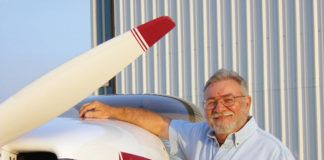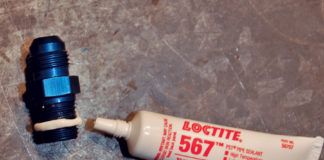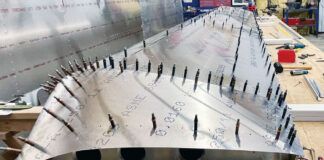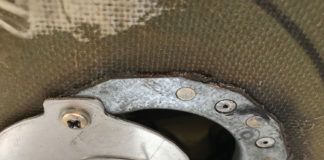Say You Want an Evolution?
Great article on the Evolution, and what an excellent design by Lancair. The numbers you gave on the glide ratio were off. By my calculations the glide ratio is 18.6:1-still very impressive. Any idea on what the weight difference will be between the turbine and piston versions?
Kurt Hanke
Until Lancair actually mounts one of the new TEO-540s, its all speculation. (So lets have some, then…) A typical PT6A is just under 500 pounds, and the listed weights of the various TIO-540 engines range from 530 to 630 pounds. We’ve looked at the mockup of the piston Evos firewall-forward and are willing to bet therell be another 15 to 30 pounds of FADEC stuff. So its likely the piston version will be heavier overall-if you said by 150 to 200 pounds, we wouldn’t fight you-but with better fuel specifics, the airplane will need to carry less fuel for any given endurance.-Ed.
Gray Instead of Gold?
First, this aircraft [the Lancair Evolution] looks like it cant miss being successful; its a beautiful exercise in aircraft design. I can understand a piston engine option. I am curious if the Continental liquid-cooled 550 was considered as a possibility?
Yes, you can turbocharge an engine and maintain its power at high altitude, and consequently the heat generated in the cylinders, but the thin air at the altitudes this aircraft can operate in wont do a great job of cooling any air-cooled engine. (This is not anything new.)
The Continental engine I mention is/was available and seems to be a logical choice in my humble opinion. This engine has been around for a long time, and the few articles I read of pilots using it in engine conversions, years ago, were very good.
John J. Pellegrino
Continental has greatly backed off developing and marketing the liquid-cooled Voyager engines. At the same time, Lycoming has become extremely aggressive in seeking out new development possibilities, so the tie-in with Lancair on the Evolution is a natural. No doubt this will be a demanding testbed for this engine design and, in particular, the new all-electronic FADEC.-Ed.
Hold Your Nose
BARF! A million dollar turbo kit airplane that I would aspire to build on the front page? Just a minute as I retrieve my pocket change while the pretty boys rub it in my face. BARF!
Vince Vairo
Catalog Dreams
Dear Doug Rozendaal: I read your article about the Lancair Evolution, but I must correct you on one point. Airplanes are not sexy! Anyone who thinks so needs to visit Victoria Secrets web site or peruse their catalog or some similar publication to see images that are truly sexy. One can clearly see that there is no resemblance to aircraft or any other machines. You writers seem to think that if you squeeze the word sex into your writing it will sell your work. Please cant you be a little more creative? This is not Playboy magazine. Sexy comes from the word sex. Sex with an airplane, now that is really getting sick. I will concede that the Evolution is a fine looking machine. A fine machine it may be, but sexy it will never be.
Daniel MacPherson
Doug Rozendaal responds: As a 50-year-old married, fat, balding warbird pilot, I can tell you I get no satisfaction from the Victorias Secret catalog, only frustration. Whether it is the bent wings of a Corsair, the roar of a Merlin, or the compound curves of the Evolution, I believe that an airplane can be sexy. But I get to play with the airplanes. If I got to play with the Victorias Secret girls, I might agree with you…. But then my wife would make it so that I could no longer play with the airplanes or the girls.
Rolling Along
Your design issue is always a treat, with the Roll Your Own article adding substantial content for this longtime reader. Lining up your 297 kits, from $7K stickplane to five-figure luxury rocket, then giving us a real airplane for less, begs the question: How about a design competition, amateur and professional, current LSA specs?
Allan Rieken
Thats not a bad idea, though wed be interested to see what could be done outside of the very restrictive LSA regulations, where design orthodoxy is the result of designing within a confined box.-Ed.
Whats Your Engine?
The Roll Your Own story by Ken Scott was very interesting. Would you pass this question on to Scott? It would solve a question of mine providing he had time to answer. Here it is: I understand the choice of VW for power, but why the 1915cc engine? According to Great Plains Aircraft, their 1915cc and 2276cc engines are only 2 pounds different in weight, but 10 in horsepower. So why not have the 10 extra horsepower for the 2 pounds?
Dennis L. Renz
Ken Scott responds: Why did we use the 1915? One, because Mel Ellis already had parts for one; and, two, many years ago my best friend was a VW mechanic. We rebuilt and sold several vans and found that engines above about 2 liters just didn’t survive as well. In an airplane, reliability is more important than power.




